Help your students begin to explore graphic novels with this collection of resources that are just right for intermediate classrooms!

Graphic novels can be a wonderful option for those students who have not found their niche when it comes to reading. Exposing students to graphic novels might be the hook some of your readers are looking for.
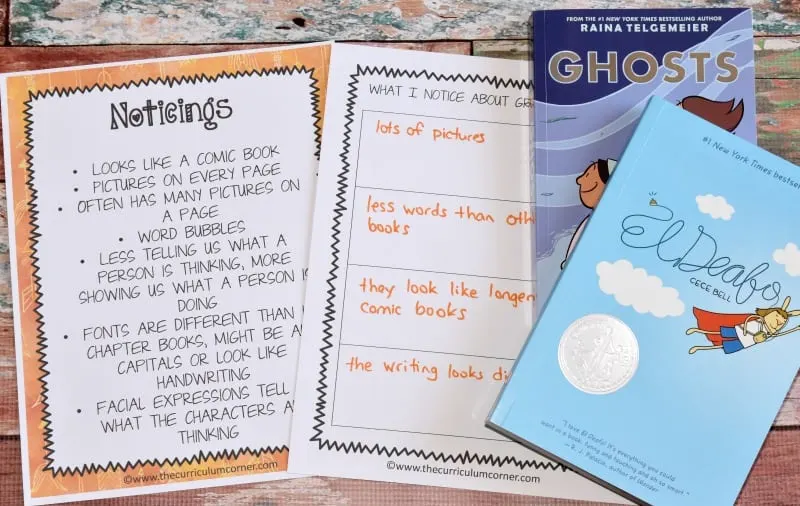
While some might pass off graphic novels as being nothing more than comic books that offer no real reading benefit, this is so far from the truth! Within this collection, we are hoping to help you find ways to make a graphic novel study in your classroom meaningful.
You will find the entire collection at the bottom of this post. Click on the bold link to download this free collection.
These resources were designed to be used as a whole class unit of study. However, if you are looking to work with a small group of students on graphic novels, you will find pieces you can pull from what we have created. Some pages might be beneficial if you are looking to create book club packets.
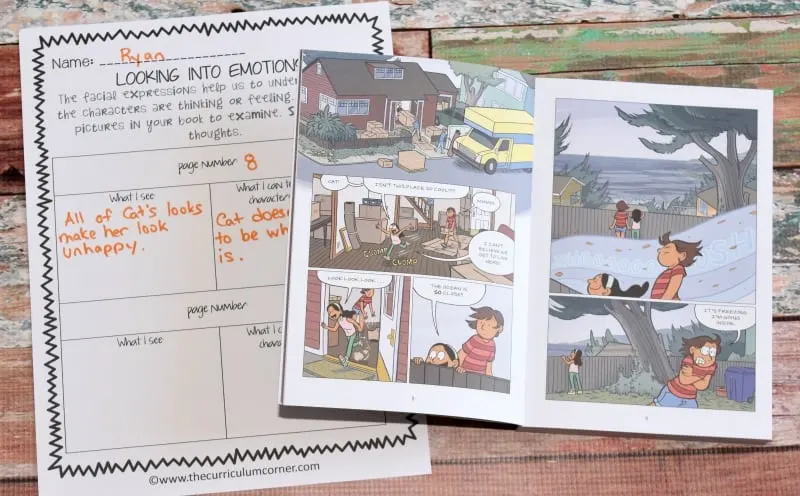
The lessons and resources we have created are each listed below.
These resources are presented as a collection for you to use in the way that suits your needs. We have created introductory lessons if your students don’t have any (or much) exposure to graphic novels. We have provided ideas and pages for a few “noticings” lessons that involve the students in a book sort and some analysis of graphic novels.
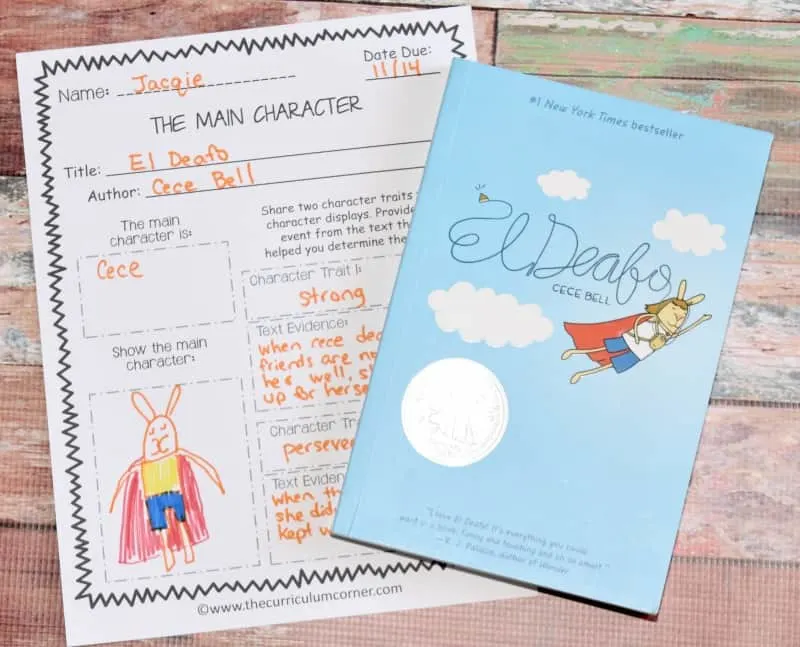
Introduction to Graphic Novels: Begin by creating a stack of texts that contain a variety of graphic novels and a variety of fiction books. You might choose to include Percy Jackson which also has a graphic novel version. It might also be a good idea to include some picture books along with chapter books. Students can compare and contrast a picture book with a graphic novel. For this lesson you will need stacks of nonfiction and historical fiction texts (mixed & shorter picture books instead of chapter books) for each group you have assigned.
Noticings Provide students with the noticings chart. Have them record four things they notice about the graphic novels.
“Characteristics of Graphic Novels” to look deeper into each text and compare them according to their similarities. Follow up the group work with a discussion of their findings and an introduction to the anchor chart you can display in your classroom. (A black and white version is provided for reading binders or folders.)
“Reading” a Graphic Novel Copy a page from a graphic novel as a poster or use a document camera to show on your smartboard. Look for a page that has multiple speech bubbles and characters that tell us what is happening using facial expressions. The more variety on the page, the better! Look at the page as a class. Talk about how this can be read like a book. Some things to note are facial expressions, boxes that are not speech bubbles that tell us what is happening. Reading speech bubbles from left to right and top to bottom.
More “Reading” A Graphic Novel Graphic novels help us “read” using more than just words on the pages. Help students understand how authors tell us what is happening by focuses on the first two or three pages of a book. Have students start with the first page and write it like it is a novel. Students will share what students are doing, how they are feeling and what they are saying. When finished, have students share with the class to help those that are not “reading” the pictures yet to understand all that a picture can tell us. We have provided lined paper for this activity.
Graphic Novel Book Club Packet Cover – If you decide to do differentiated graphic novel book clubs with some of the resources, this cover will help to disguise the fact that there are different pages in each book club’s packet.
Story Map
Characters -Students share two characters from the book. They will then look at the words and pictures to share what they have learned about each character.
Looking into the Characters Students will draw an outline only of their character. On the outside of the character, they will draw arrows and share what the character looks like. On the inside, they will fill the character with character traits they have learned about the character.
The Main Character Students identify the main character. They will then choose two character traits. Each character trait will need to be supported with evidence from the text.
Plot Students will identify the problem and solution in their graphic novel.
Theme This portion includes an anchor chart. It contains some common themes but there are many others. At the bottom, there are prompts to help students focus on determining the theme. We have included this as an anchor chart and in black and white.
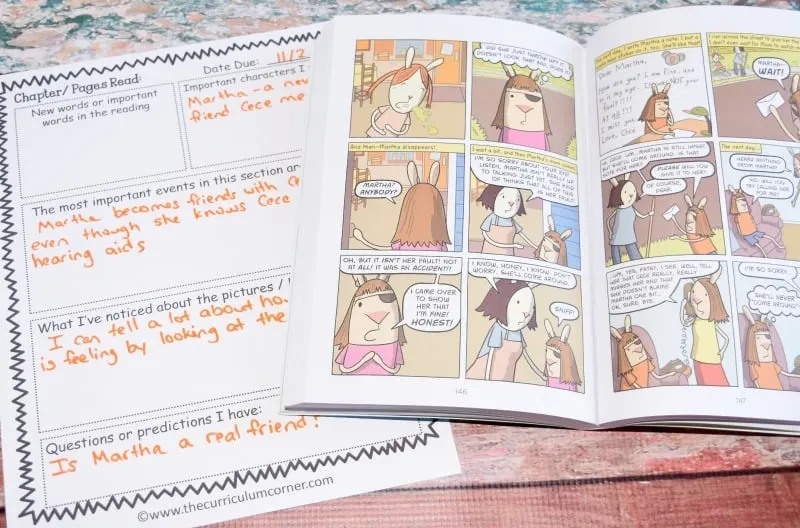
Summary Pages These are pages to be used for students to record their thoughts. You might assign one for each chapter or section. It might be helpful to model the completion of a page for students. This will help set expectations of what the completed page should look like.
Emotions One important aspect of graphic novels are the pictures. This helps us as readers to “read” how the characters are feeling. Focus on these pictures using one of the emotions pages we have provided.
Graphic Novel Templates Students will take a chapter from a novel and turn it into a page or two in a graphic novel.
Reading Response Questions This set contains 12 cards that can be printed in color and laminated. Depending on your students’ previous exposure to graphic novels, these cards might be used in different ways. They can be used to lead whole class discussions. Or, they might be placed at a center to lead group discussions. You might even have students write a response in their journal using the prompt on the card.
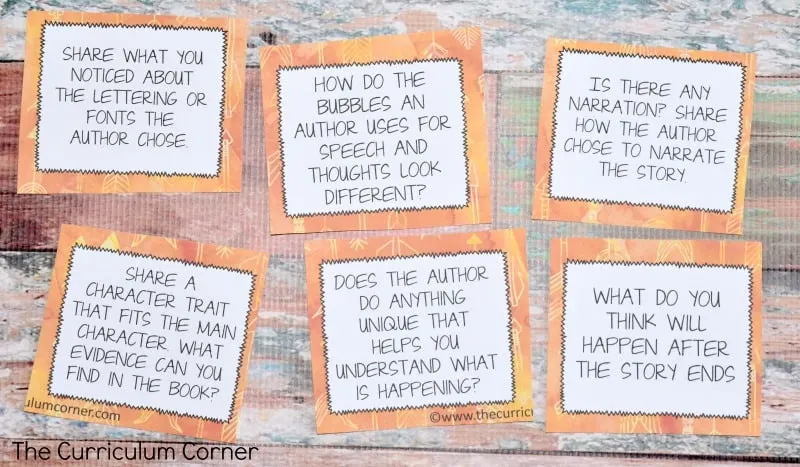
You might also use the black and white version of these cards. Provide students with the half page, lined template. They can glue the question onto their page and glue their page into their reading journal.
Notes about these questions: Skills that need addressed before using these cards include onomatopoeia and the use of narration in the text
Other Extensions:
Write your own words! Copy a page from a graphic novel, erase the words. Have students use the pictures to write their own words to tell what is happening in the story.
Creating a Graphic Novel Turn a favorite novel into a graphic novel. As a class, choose a book you have read aloud. Divide the book into sections so each child or small group has a section. Students will take their section and create a page or two as a graphic novel. They will write the words and illustrate their parts like they are graphic novels. When finished, bind the book as your classes own graphic novel. We have provided graphic novel templates that you might use. Or, students can create their own.
You will find all the resources for our graphic novels described above in one download here:
Graphic Novel Collection
You might also be interested in our Mystery Collection. We also have a set that focuses on Historical Fiction.
You will find a few graphic novels below. Contains affiliate links:

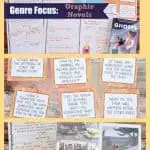
Comic Strip Writing Templates - The Curriculum Corner 4-5-6
Wednesday 4th of September 2019
[…] Your students might also like Genre Focus: Graphic Novels […]